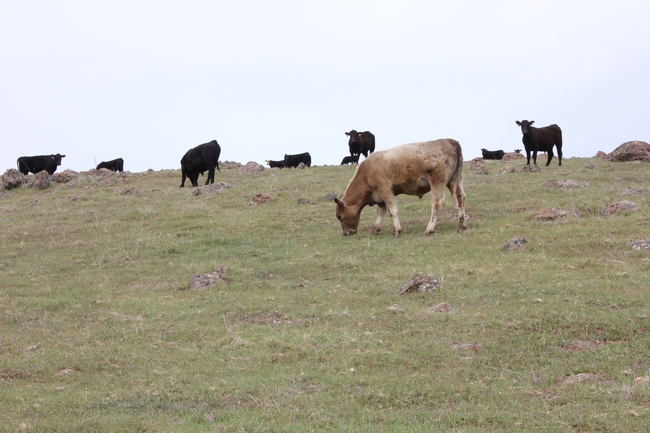Low residual dry matter on rangeland a concern heading into wet season
With some recent forecasts bringing encouraging news about a potential El Niño, some ranchers have been asking about what they should expect in terms of forage production, if and when the rains come. What they want to know is how soon rangeland productivity will reach the pre-drought levels again. One issue that I always draw their attention to is the levels of residual dry matter (RDM) on the rangelands. Even with the reduction in herd sizes and shorter grazing seasons employed by most producers, more rangelands now have less than recommended RDM levels.
RDM is a measure of the old plant material (without counting summer annuals) that are left standing or on the ground before the fall precipitation comes. It is a great indicator of both forage production and grazing intensity. These leftover plant materials are critical on California rangelands to reduce erosion and nutrient loss, and to create a conducive environment for diverse plant communities to thrive. Optimum RDM levels are site specific, they range from 100-2,100 pounds per acre, and depend on precipitation zone, slope and tree canopy cover. Ideal RDM levels increases with precipitation and slope, and decreases with tree cover. Studies show that too low or too high RDM levels will reduce species composition and forage production, both factors critical to any livestock production system. The good news is that annual rangelands are resilient and will likely return to normal production within two years after bringing RDM level to recommended standards.
Knowing the RDM standards for one's rangeland and continuously monitoring is an important step towards achieving sustainable rangeland management and livestock production.
Details about RDM standards, data collection methods and more can be found in the free UC Agriculture and Natural Resources publication Guidelines for Residual Dry Matter on Coastal and Foothill Rangelands in California.
Author: Fadzayi Mashiri, Ph.D.
Comments:
A pretty challenging task, it would seem, if the bulk of existing summer annuals consisted of Medusahead, for example.
Further: "Optimum RDM levels are site specific, range from 100-2,100 pounds per acre,..." and depend on a number of widely-ranging environmental factors and levels of their individual impacts.
The photo presented (apparently taken on the "Forbes Hill Field" at the UC Sierra Foothill Research & Extension Center), if chosen to illustrate a suitable level of RMD for this site, is mostly an example of overgrazing.
My comment then, distills to deleting "(without counting summer annuals)", simply because it can't be done on many, if not most, of California's annual rangelands.


A pretty challenging task, it would seem, if the bulk of existing summer annuals consists of Medusahead.
The photo chosen to illustrate an appropriate level of RMD (probably taken on "Forbes Hill" at the SFREC?) is, at least, a good example of overgrazing.
Posted by Charles A Raguse on October 3, 2015 at 9:06 AM